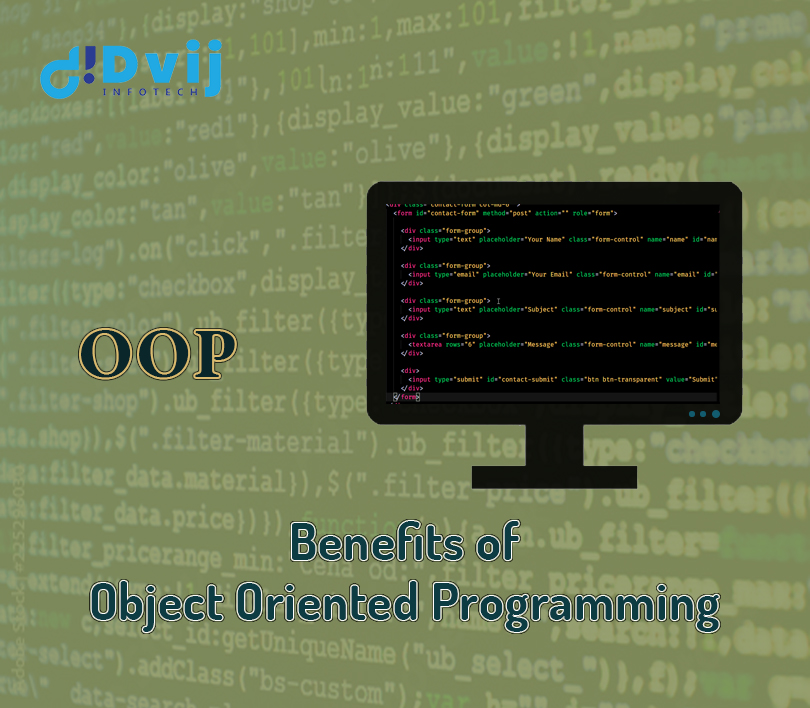Object-oriented programming (OOP) is a programming paradigm centered entirely on 'objects.' Let take example Mr. A is going to make a POT using BLOCKS, which requires a general explanation of the term 'object.' By default, blocks are measuring units similar to height, radius, and form. These attributes are present by default, which means that if you use a block, it will have the same dimensions. Other important features, such as color, material, and pricing, are yet to be assigned. As a result, objects are nothing more than POTS.
When we need to, we assign values to the properties of an object. BLOCK is nothing more than the object's templates. There, we describe how the thing should appeal (i.e., how it should appear) and how the actions will be carried out. It's referred to as a class in Java.
Benefits of Object-Oriented Programming
Moving on to the benefits of OOP, we'd like to point out that there are several, as this is one of the most extensively used development methodologies. Let's look at the Benefits that OOP offers to its customers.
Adaptability
It entails repurposing some facilities rather than constructing them from scratch. This is accomplished through the usage of a class. We can utilize it an unlimited number of times depending on our needs.
Safety and security
We are filtering out restricted data to expose through data hiding and abstraction mechanisms, which means we are keeping security while offering critical data to see.
This category's most popular course
Design Advantages
If you practice OOPs, the design benefit a user will receive is in terms of designing and repairing things quickly, as well as eliminating risks (if any). Object-Oriented Programs require creators to go through a lengthy and exhaustive design phase, which results in better designs and fewer flaws. It's easier to program all the non-one OOP's by one when the program has reached some crucial boundaries.
Increased output
With the above-mentioned facts of use, the application significantly improves the total productivity of its users. This results in more work being completed, better software being completed, more built-in features being available, and easier reading, writing, and maintenance. By piecing together new software parts, an OOP programmer can design entirely new programs.
It's possible thanks to a plethora of libraries that provide a wide range of useful functionalities.
Troubleshooting is simple
Let's have a look at some of the most typical concerns or problems that developers confront in their work.
Is this an issue with the widget file?
Is it the WhaleFlumper that's causing the issue?
Will I have to slog my way through the sewage.c' file?
Commenting on all of these code-related issues.
As a result, something frequently goes wrong, and the developers must engage in extensive brainstorming to determine the source of the problem. Relax! If you're working with the OOP language, you'll know what to look for. The benefit of encapsulation in OOP is that all objects are self-constrained. IT teams gain a lot of work benefits from this multimodal behavior because they can now work on numerous projects at the same time, with the added bonus of no code duplication.
Flexibility
Let's look at a hypothetical situation to further understand this behavior.
When the environment or location changes, you adapt your behavior. In a market, a person will act as a consumer; in a school, he will act like a student; and in a family, he will act like a son or daughter. We can see that the same person exhibits varied behaviors depending on the environment. As a result, polymorphism is adaptable and beneficial to developers in a variety of ways.
It's all about simplicity.
Problem-solving skills
Breaking down a challenging activity into smaller pieces or separate components is a smart approach. Because OOP breaks down your software code into digestible bits - one object at a time – it excels at this. The broken components can either be reused in future modules that relate to the same interface with implementation details, or they can be replaced by future modules that relate to the same interface with implementation details.
A general real-time scenario — an automobile can soon be divided into wheels, engine, and chassis at a high level. Each of those elements can be broken down further into even smaller atomic components, such as screws and bolts.
